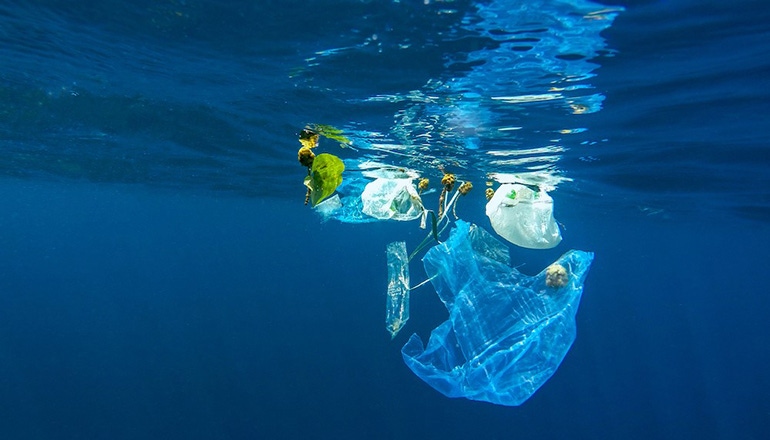“Plastics Policy Playbook: Strategies for a Plastic-Free Ocean” offers policy solutions to fund waste collection and reduce ocean plastic pollution.

Ocean Conservancy, in partnership with the Trash Free Seas Alliance, recently released its new “Plastics Policy Playbook: Strategies for a Plastic-Free Ocean.” Based on desk-side research, in-country workshops and robust financial modeling, the report is an in-depth guide to some of the most impactful public sector and private sector interventions available to tackle the scourge of plastic pollution in parts of the world most affected by the crisis.
“We are seeing unprecedented interest from government and business leaders alike in moving to a circular economy and addressing ocean plastic pollution; but with so many interventions needed—from bans to taxes to product redesign and everything in between—execution remains a challenge,” said Ocean Conservancy CEO Janis Searles Jones in a statement. “It is our hope that this document, rooted in data and research, will serve as a policy playbook for a key part of the systemic solution to ocean plastic.”
The new Plastics Policy Playbook builds on previous white papers published by Ocean Conservancy on the economics of plastic waste collection. In 2015, Ocean Conservancy released “Stemming the Tide,” which built on seminal research by Dr. Jenna Jambeck and her colleagues to find that 75 percent of the plastic in the ocean was never collected as part of a formal waste management system, and 60 percent originates from five focus countries in Asia—China, Indonesia, the Philippines, Thailand and Vietnam. A second report, “The Next Wave,” identified that collection in these focus countries is largely underfunded and a net cost activity for most waste streams. Collection is not only key to stopping plastic pollution in the near term, but it is also critical to building a circular economy, where materials are continually recovered and reused rather than becoming waste.
This third report offers further analysis of how to finance plastic waste collection so that plastic never ends up in the ocean. Key findings include:
In the five target countries, there is a net financing gap for plastic waste collection of between $28 and $40 per ton.
To reduce the financing gap and ensure that all waste is collected, extended producer responsibility, implemented through packaging material fees—where producers pay fees depending on the amount of packaging material put on the market or their plastic recycling/recovery targets—can have the highest potential in reducing this gap, by up to 75 percent.
Increasing demand for recycled plastic through recycled content standards has a potential to reduce the existing collection financing gap by up to 34 percent.
Bans on problematic and unnecessary single-use plastics (specifically, plastic grocery bags, plastic straws and stirrers, plastic cups and lids, plastic cutlery, foam food containers, oxo-biodegradable plastic materials, PVC packaging and primary microplastics) can improve collection by reducing the contamination of post-consumer waste streams.
“The findings reinforce what we’ve long suspected, which is that we need a suite of solutions to address the problem of ocean plastic, and everyone has a role to play,” said Chever Voltmer, plastics initiatives director at Ocean Conservancy, in a statement. “The good news—as we’ve seen firsthand in developing this report with key partners from the Trash Free Seas Alliance—is that we are seeing both governments and the private sector ready and willing to do their part.”
About the Author(s)
You May Also Like


